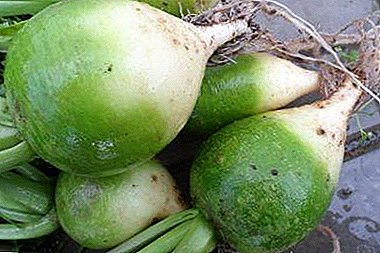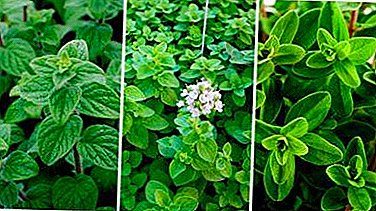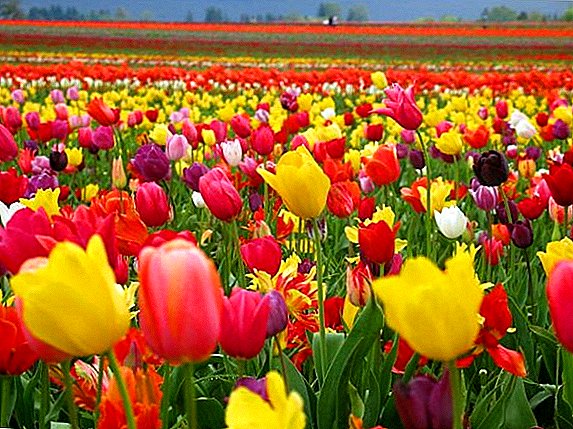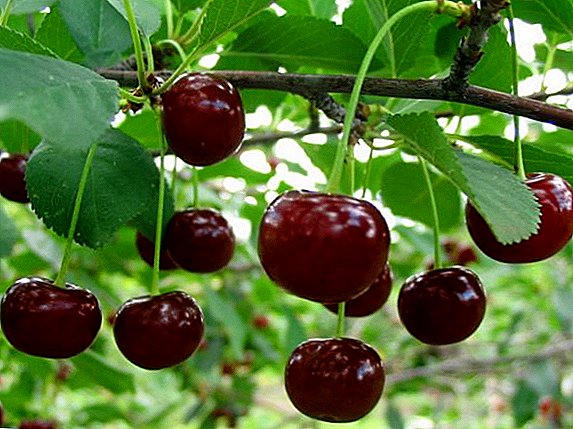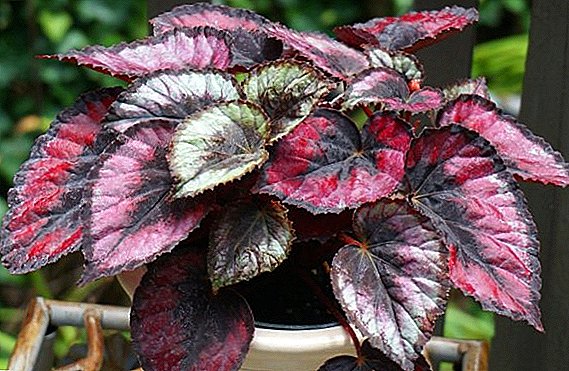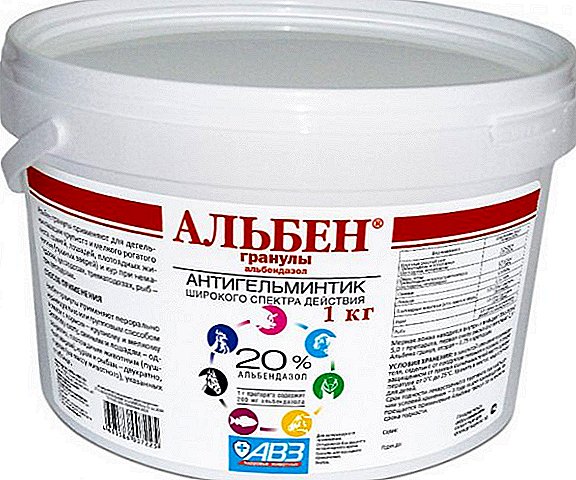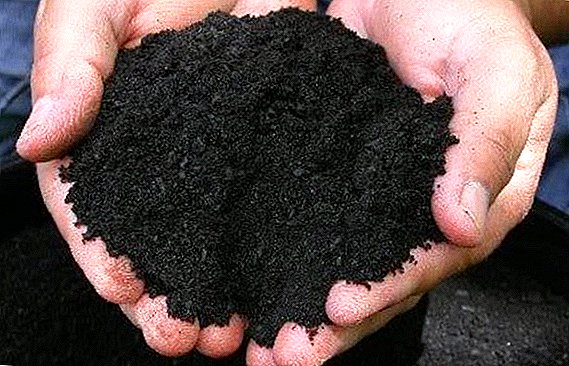 Soil fertilization is an important process for the active growth and development of plants and, accordingly, for obtaining a large and high-quality crop. Fertilizers - a set of substances that are used to improve the condition and properties of soils. They feed the plants with the necessary chemical components.
Soil fertilization is an important process for the active growth and development of plants and, accordingly, for obtaining a large and high-quality crop. Fertilizers - a set of substances that are used to improve the condition and properties of soils. They feed the plants with the necessary chemical components.
There are the following types of fertilizers:
- organic and mineral (by origin);
- solid and liquid (state of aggregation);
- direct action and indirect (mode of action);
- basic, pre-sowing, feeding, subsurface, surface (method of introduction).
Soil types:
- sandy;
- clayey;
- sandy;
- loamy;
- podzolic;
- peat-swampy;
- black soil
Clay soil fertilizer
Clay soils are soils that contain 40-45% clay in pure form. They are characterized as sticky, moist, viscous, heavy, cold, but rich. Clay earth is slowly soaked with water and it is strongly retained, very poorly and slowly pass water into the lower layer.
Therefore, plants growing on this type of soil, practically do not suffer from drought. The viscosity of such soils with strong moisture makes it difficult to cultivate the earth, as with full drying - the earth becomes stone, however, it cracks severely, which contributes to the rapid penetration of water and air into the cracks.

Therefore, the heaviest soils for processing are clay. To process them, you need to wait for the state when the soil is no longer sticky, but it will not dry out. To prepare clay soils for planting, it is necessary to make a sufficiently large amount of effort.
The first thing to do is to improve and fertilize a clay bed. To prevent water from stagnating, it is necessary to fill the lowlands and level the hills, that is, level the surface. Organic top dressing is considered the first step to the cultivation of clay soils. They are made in the autumn when the harvest is gathered. If the development of the land is just beginning, it is necessary to deposit 1.5 buckets of organic matter per square meter of clayey earth.
Did you know? Manure on clay soils continues its operation for eight years, while light soils need to be fertilized after four years.Also well-suited complex of manure, potassium nitrate and sawdust. For 10 kg of manure, add 100 g of nitrate in liquid form and 2 kg of sawdust. Improvements can be made using sawdust with a urea solution. To do this, take three buckets of sawdust and 100 g of urea diluted in a bucket of water.

When using top dressing on clay soils, green fertilizers or siderats are well recommended. For this, single-legume leguminous crops are sown in spring, and in late autumn they are processed together with the ground in order to create conditions for the decay process. Such activities not only enrich the earth with organic supplements, but also improve its structure.
How and what can facilitate the soil: the loosening of clay soils contributes to river sand, which is applied with organic fertilizers. Use three buckets of sand per 1 square meter of land. Adding sand is best done in the fall when digging.
To enrich the clay soil can be sown with clover, then mow after 10 days of growth, leaving for rotting. If clay soil is acidic, then alkaline fertilizer must be applied. Slaked lime is used for this.
Important! To determine the acidity of the soil, look at the vegetation. Plantain, horsetail, wood lice, and buttercup grow on sour soil. On subacid and neutral - clover, wheat grass, chamomile, field bindweed.
To turn clay into loamy soil, you will have to make an effort and make organic dressings every year for five years. When the development of the ground took place and it was possible to slightly improve its components, work is being done on fertilizer for growing plants.
Mineral fertilizers are inorganic synthetic compounds. We will understand, for what mineral fertilizers are applied to the soil. This type is used in order to replenish the stocks of nutrients: nitrogen, phosphorus, potassium. 
Mineral fertilizers are applied to clay in the fall, under plowing. They are used in small quantities, since clay is already rich in minerals. The choice of mineral fertilizers depends on what you plan to grow in this area.
On clay soils grow apples, cherries, figs, quinces, raspberries, hawthorn. When planting vegetables on a clay bed, seedlings are planted at an angle, placing the roots in a warmer soil layer; seeds need to be sown in shallow wells.
Potatoes should be planted no deeper than 8 cm. The earth should be constantly loosened around the plants during the rainy period, and during drought - after watering.
To improve fertility and increase the amount of minerals and elements in the soil it is necessary to fertilize it. You can use different manure: sheep, rabbit, horse, chicken droppings.
Fertilizer sandy soil
Sandy soil is a crumbly, non-viscous earth, in which up to 50 parts of sand falls on 1 part of clay. You can check whether the sandy type of soil on your site. Try to roll the ball or flagellum. If it turns out to roll the ball, but the flagellum does not, then it is sandy ground, and if neither the ball nor the flagellum are formed, then the type of this earth is sandy. 
The problem of sandy soil is the poor retention of moisture, therefore, without improving it, you will not only not achieve high yield, but also normal plant growth. Evaporating, moisture takes most of the nutrients. Sandy land cools rapidly and heats up just as quickly, so in winter the plant will die from the cold, and in the summer from burns of the roots and due to the death of the root system.
To improve the soil it is necessary to increase their viscosity. To do this, use organic dressing. Using manure will help improve the sandy soil. Per square meter you need to use two manure buckets. Such manipulations must be carried out within three years.
A cheaper but less effective way to improve sandy soil is to fill it with compost or peat. One square meter should use one bucket of fertilizer. Also, like clay soils, sandy are improved by sowing the territory with legumes. Digging is necessary with the plants, they will help to increase the viscosity. 
You will need to put more effort and effort into improving the soil with clay. For this it is better to buy powdered dry clay. If you spend and bring in four buckets of such fertilizer for the soil, then in two seasons you will be able to turn the sandy soil into sandy loam.
When the land improves, every summer it is necessary to carry out mulching, thanks to which the water will not evaporate so quickly. Organic fertilizers are applied to the sandy ground in autumn, in particular, these are peat and manure. It is better to add mineral and some organic fertilizers for sandy soil in spring, if you apply it in the fall, then most of the water is washed.
As a fertilizer for acidic sandy soils, wood ash is used. It promotes deoxidation, and on neutral soils it is a source of potassium and phosphorus. To make ash costs 200 g per square meter, not to bury, but just to scatter. Do not apply ash with nitrogen fertilizers - it will lose its properties.

The time interval between the introduction of various types of fertilizers should be at least a month, and it is better to use nitrogen fertilizers just before planting / planting.
Mineral fertilizers on sandy soils must be applied carefully, because they immediately get to the roots of plants and can burn them. It is better to fertilize more often, but with a lower concentration.
Type of feeding, the number and frequency of application depend on the plants that you plan to plant. On sandy grounds, legumes, honeysuckle, blackberries, currants, gooseberries, plums, cherries, apples, grapes, melons and gourds grow well.
Sandy Soil Fertilizer
Sandy sands are soils in which there are 3 parts of clay per 7 parts of sand. They are characterized by the fact that they have a crumbly structure, moderately hold moisture. Unlike sandy, sandy soils are favorable for growing plants.
Sandy soils are breathable, delay mineral fertilizers, prevent them from leaching, and can hold water. Peat and dung are well suited for top dressing, they are introduced in spring or in autumn during tillage. Mineral fertilizers, as is the case with sandy soils, are made in the spring, in small portions, but often. 
Sandy soils are quite fertile and suitable for growing most plants. On the sandy can be grown garden crops, most of the fruit and berry plants, crops.
Loamy soil fertilizer
Loamy soils are those that contain most of the clay and less of sand. They are considered to be a combination of clay type and sandy loam.
Loam split on species:
- lungs;
- medium;
- heavy.
Loamy soils are best suited for planting garden and garden crops. They are easily ventilated, well heat and moisture permeable, easily processed. Loams are rich in minerals and elements, contain a large amount of nutrients, constantly replenished by microorganisms that inhabit the soil.

Despite the natural content of microelements, loamy, like sandy loam soils need top dressing. Manure and compost are recommended for application, and they recommend to use loam for processing in the fall.
Also, the introduction of additional organic and mineral fertilizers, it is advisable to carry out depending on the planned planting or planting.

On heavy loam can grow cherry plum. Light loamy soils are suitable for growing pears and apples. After cultivation, such plants for loamy soils, such as legumes, maize, sweet peppers, and root vegetables, which are very demanding on the composition of the soil, are able to develop normally.
Fertilizer podzolic soils
Podzol is the soil characteristic of coniferous forests. They are formed under the influence of low temperatures and high humidity.
Did you know? This type of soil received this name from the words "under" and "ash", that is, similar to ashes.
This type of land is considered the most unsuitable for vegetable growing, as it has an acid reaction and low fertility. Consider which fertilizer is better for acidic podzolic soils.

When using these soils for planting, it is necessary to reduce the acidity by liming. To do this, 0.5 kg of lime contribute to 1 square meter of land. The specified amount of lime is used 1 time in 8 years. The introduction of lime should be carried out in the fall, while using any other dressing is not necessary.
If organic or mineral supplements are added with lime, the effect of the latter will be minimal, since lime reduces the effectiveness of other fertilizers. Therefore, lime is used in the fall, and organic and mineral supplements are used in the spring.
How to use fertilizers for acid soils:
- manure must be applied in early spring for tillage;
- ammonium supplements (urea, ammofoska, ammonium chloride) are also introduced in the spring period;
- potash supplements contribute in the fall.
Important! Cabbage, beets, alfalfa and hemp do not tolerate an acidic environment.

Sensitive to acidity are plants: wheat, barley, corn, cucumbers, onions, legumes, lettuce, sunflower.
The weakly sensitive to acidic environments include: millet, rye, oats, carrots, tomatoes, radishes.
Flax and potatoes, when grown on highly acidic soils, require liming of the soil.
Thus, almost all plants need lime in the soil in order to properly absorb nutrients.
Also for soil fertilization using charcoal, peat and sawdust.
Peatland fertilizer
Peat-swamp soils are a type of soil that is formed with constant strong overmoistening with sediments or groundwater.
Peat-swampy soils consisting of organic substances are rich in nitrogen, which is rarely found in the natural available form for plants.

But at the same time there is a shortage of potassium and a critical shortage of phosphorus. Such soils poorly conduct heat, peat slowly heats up. Consider what fertilizers should be applied to peatland and marshy land.
Peatland improvement should be carried out in two directions:
- the creation of conditions for normal life by applying manure, sawdust, compost;
- the introduction of missing elements, such as potassium and phosphorus, to ensure the normal development of plants.

Most fruit trees do not tolerate the constant stagnation of water, so they should be planted on high ground or on poured land. The system of drainage of wetlands, which allows growing crops, vegetables, and fruit and berries, has recommended itself well.
Fertilizer black soil
Chernozem is a type of land that has a dark color and contains a large amount of humus. This type of earth is rich in phosphorus, nitrogen, iron, sulfur. Chernozems are well water and breathable, contain a large amount of calcium.

The chernozems themselves are rich and fertile. If necessary, phosphate and potash fertilizers are used as an autumn fertilizer for the soil. Considering the fact that the chernozem does not have very good looseness, in the fall you can put in compost, sand or peat: use 1 part of top dressing for 3 parts of the chernozem.
Despite fertility, black soil loses it over time, if you do not take care of them and do not fertilize them. For soils with normal acidity are suitable: saltpeter, potash supplements. For acidic chernozems, it is necessary to add hydrated lime at the rate of 200 g per 1 square meter.

Chernozems are suitable for the vast majority of plants. Technical, cereals, fruit, oil crops are grown on such soils.
Summing up, it is important to say that any kind of soil requires maintenance. For normal growth and development of plants, increasing fertility and yield, it is necessary to apply fertilizer to the soil.


